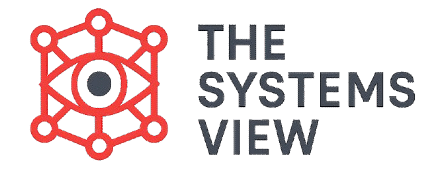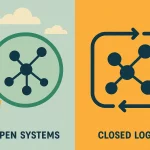What makes a living thing live? For a long time, scientists focused on what life does, like growing, moving, or reproducing. In the 1970s, two scientists introduced a powerful idea from the world of Systems Thinking: Autopoiesis. This concept focuses on the internal organization of life.
Autopoiesis (meaning “self-making” or “self-producing”) is the idea that a living system is one that continuously creates and maintains its own components and structure. The system’s only purpose is to produce itself. This theory was created by the Chilean neurobiologist Humberto Maturana, working with his student and colleague, Francisco Varela.
The Origin of the Idea
Humberto Maturana’s inspiration for Autopoiesis came when he was a medical student. He was reflecting on the nature of life while seriously ill. He realized that what was unique about living systems was that they were “discrete autonomous entities”. He saw that all their internal processes were lived in reference to themselves. This concept of autonomy and self-reference became the foundation of his work.
The Biology of Cognition
Maturana’s work is sometimes described as the “biology of cognition”. Early experiments on the frog’s eye showed that the frog does not see the world as a whole. It only takes in information that is relevant to it at that moment, like patterns that enable it to catch flies. When applied to humans, this meant that our understanding of the world is only partial.
After studying the color vision of pigeons, Maturana concluded that he had to completely abandon the idea of an “external independent world to be known by the observer”. This focus on the person doing the observing is crucial in Second-Order Cybernetics and led to a famous phrase:
Anything said is said by an observer.
This powerful statement means that the observer is a vital part of the system. By identifying the observer as part of the system, the concept of objectivity is denied.
Defining an Autopoietic System
The word autopoiesis was coined by Maturana. It refers to the basic idea that living systems are “organised in such a way that their processes produce the very components necessary for the continuance of these processes”. This circularity is essential. The system maintains itself solely through its own activities. Maturana argues that autopoiesis is the “necessary and sufficient condition for the constitution of living systems”.
Organization vs. Structure
Maturana and Varela made a key distinction to explain how a living system can keep going while still interacting with its environment.
Organizationally Closed
An autopoietic system is organizationally closed. This means the system maintains its basic organization and network of internal relationships, regardless of changes in its surroundings. The system must keep its organization to remain alive.
Structurally Open
However, the system is structurally open. Energy and matter must be able to flow in and out of the system. This flow is what allows the components to be constantly replaced and rebuilt.
For example, a living cell is the perfect autopoietic system. Its metabolic processes are a network that constantly produces and replaces its own elements, including the membrane that forms its boundary.
Interaction with the Environment
If a system is organizationally closed, how does it deal with the outside world? It does so through a process called structural coupling.
The environment does not give the system direct instructions. Instead, the environment only provides a trigger. This trigger causes the system to undergo its own internal structural changes. The system’s structure changes to match the environment. If the changes occur, the system maintains its autopoiesis. If they do not, the system will break apart.
Applications and Disagreements
The theory of autopoiesis was first applied to the dynamics of cells. However, it has been applied by others to many fields, including law, sociology, family therapy, and organizational theory.
Social Systems
A significant application was made by the Systems Thinker Niklas Luhmann. Luhmann applied the concept to social systems. He argued that a social system is autopoietic because it constantly reproduces communication, which he saw as its primary component.
However, Maturana strongly disagreed with this broader use of his idea. He argued that for autopoiesis to work, the system’s elements must produce elements of the same kind. Communications “presuppose human beings that communicate,” which, for Maturana, complicated the system’s ability to be truly closed and self-making.
Conclusion
Autopoiesis is a fundamental concept in Systems Thinking and Later Cybernetics. Developed by Humberto Maturana and Francisco Varela, it gives a clear, system-based definition of life. It defines a living system by its continuous self-production and organizational closure. The theory explains that the ultimate purpose of any living thing is the perpetual maintenance of its own self, making it a truly autonomous system.



